A fast-growing plant, Loniceras require regular pruning and training to maintain their appearance and strength. The climbing species, attached to a support, are highly prized for their generous, colourful, and fragrant flowering. Moreover, the evergreen Honeysuckle allows you to create beautiful decorative screens all year round. As for the shrubby Honeysuckles, some, pruned into topiary, delight gardeners with an artistic soul, while others are ideal for hedges or as ground cover on slopes. Depending on the type of plant or the desired result, pruning is not done at the same time or in the same way.
Discover our tips for pruning your climbing or shrubby Honeysuckle!
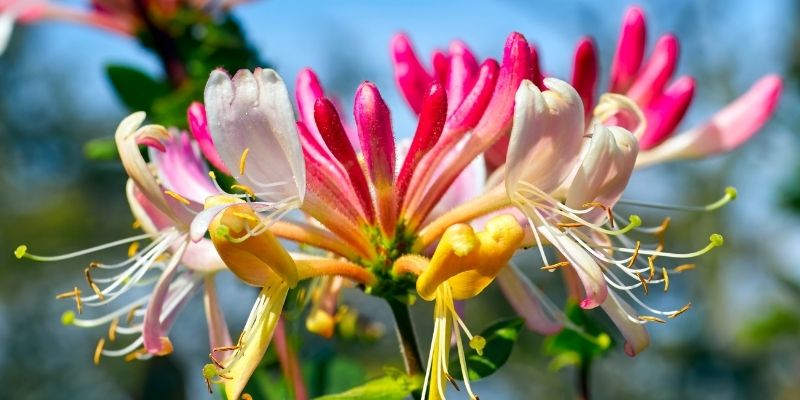
Why prune Honeysuckle?
Pruning Honeysuckle is not obligatory, but it can be done for several reasons. Firstly, pruning the shoots stimulates the production of young growth. Thinning out a climbing plant attached to its support (pergolas, trellises, fences...) allows more light to reach the heart of the branches, thus encouraging the growth of new shoots. Note that the more severe the pruning, the more vigorous the new shoots will be. Severe pruning therefore revitalises a weak Honeysuckle and strengthens its framework. Secondly, to achieve beautiful, fragrant inflorescences every year, regular pruning is essential. Finally, it may also be necessary to remove overly vigorous shoots that invade neighbouring plants or become troublesome near a walkway.
What tools to use?
To avoid transmitting diseases to your Honeysuckle, use clean, well-disinfected, and perfectly sharpened tools. When pruning, the cut should be clean. Depending on the Honeysuckle you are pruning, you will need:
- a pruning shear
- a shear
- a branch cutter
When and how to prune Honeysuckle?
Not all Honeysuckles are pruned in the same way or at the same time. It also depends on the desired result. A few general rules should be followed:
- always cut shoots at an angle to prevent water stagnation, which can cause diseases, or make a straight, clean cut if the buds are opposite,
- cut 5 mm above a well-oriented bud, following its inclination,
- do not prune during frost or extreme heat.
Shrubby Honeysuckle
Pruning is done to limit their growth.
For deciduous species like Lonicera fragrantissima and Lonicera purpusii, both called 'Winter Honeysuckle', pruning should be done after flowering, from April to May. It involves thinning the centre by removing the oldest branches to let in light, removing excessive suckers, dead and misplaced shoots, and shortening the branches by half to create a more compact shape. Remove a maximum of 1/4 of the bush's branches.
For evergreen species, mainly Lonicera nitida and Lonicera pileata, pruning is used to restore a uniform shape to the bush. Lonicera nitida is pruned 2 to 3 times a year in April and September to maintain a compact habit. It is often used to form topiaries as a substitute for boxwood. Lonicera pileata, with its creeping habit, is used as ground cover or for low hedges. This one is pruned in May. Prune the upright branches at the top with pruning shears, then refine the edges with shears to give it the desired shape.
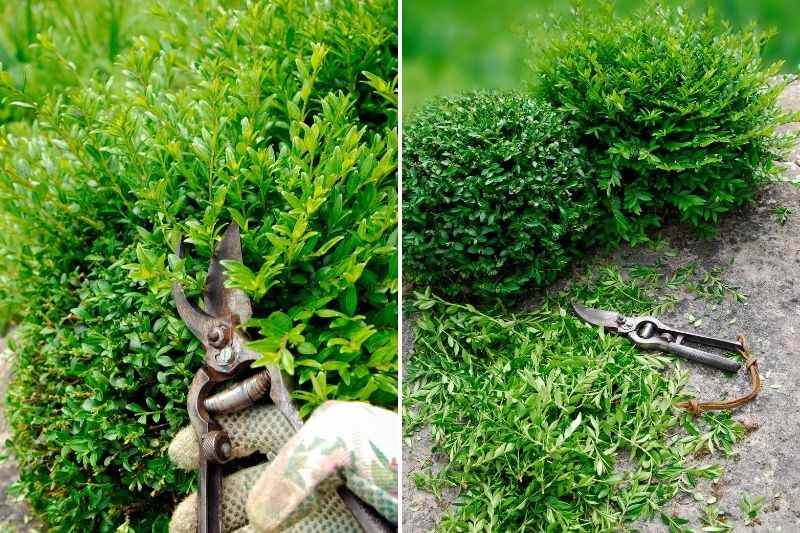
Lonicera nitida pruned into a ball
Climbing Honeysuckle
Climbing Honeysuckles can be pruned at different times of the year to maintain a restricted volume and avoid significant bareness at the base of the plant. During each pruning, remove dead, misplaced, damaged, or diseased wood.
-
Training pruning:
At planting time in autumn or early spring, prune the Honeysuckle by removing tangled stems and cutting back lateral shoots above a bud. At the centre of the plant, if there is strong competition, cut back heavily branched branches.
-
Maintenance pruning:
a) After flowering:
Most Honeysuckle species flower on the previous year's wood. Light pruning can therefore be done after flowering to allow new shoots time to mature before winter. They will flower the following year:
- Remove shoots that have borne flowers by cutting above a node (where a young shoot emerges).
- If the foliage is very dense, cut back the weakest shoots, as well as the tangled stems at the top.
- Cut dead, damaged, or diseased shoots back to the base.
b) In late winter:
When there is no frost, this pruning is done to stimulate flowering. Shorten all lateral shoots near a main stem to 5 or 6 buds. Deciduous species can also be pruned at this time, when the stems are bare. Without the leaves, it is easier to clean and train the Honeysuckle.
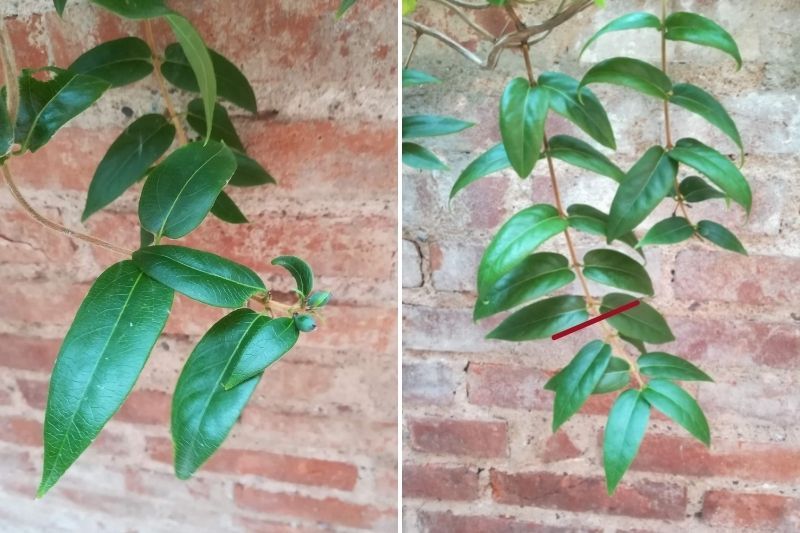
On the left, you can see the fruits at the end of a shoot that has borne flowers; on the right, in winter, cut the shoots to 5 or 6 nodes from a main stem
My Honeysuckle is bare, what should I do?
To rejuvenate an old or bare Honeysuckle, you need to carry out severe pruning in late winter, in March when the plant is still dormant. Before the vegetation resumes, cut back the stems to about 40-50 cm from the ground. New shoots will emerge from the stump.
Training Honeysuckle
At planting time and throughout the first year of growth, guide the framework branches and flexible twining stems by spreading them evenly over the support. Then, each year during pruning, orient and secure the pruned shoots. Keep the most vigorous shoots to renew the main framework.
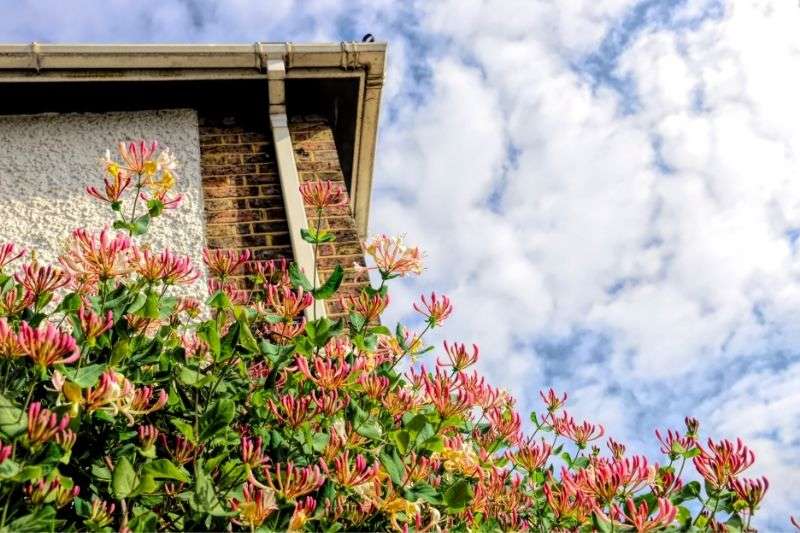
A well-pruned honeysuckle offers generous flowering.































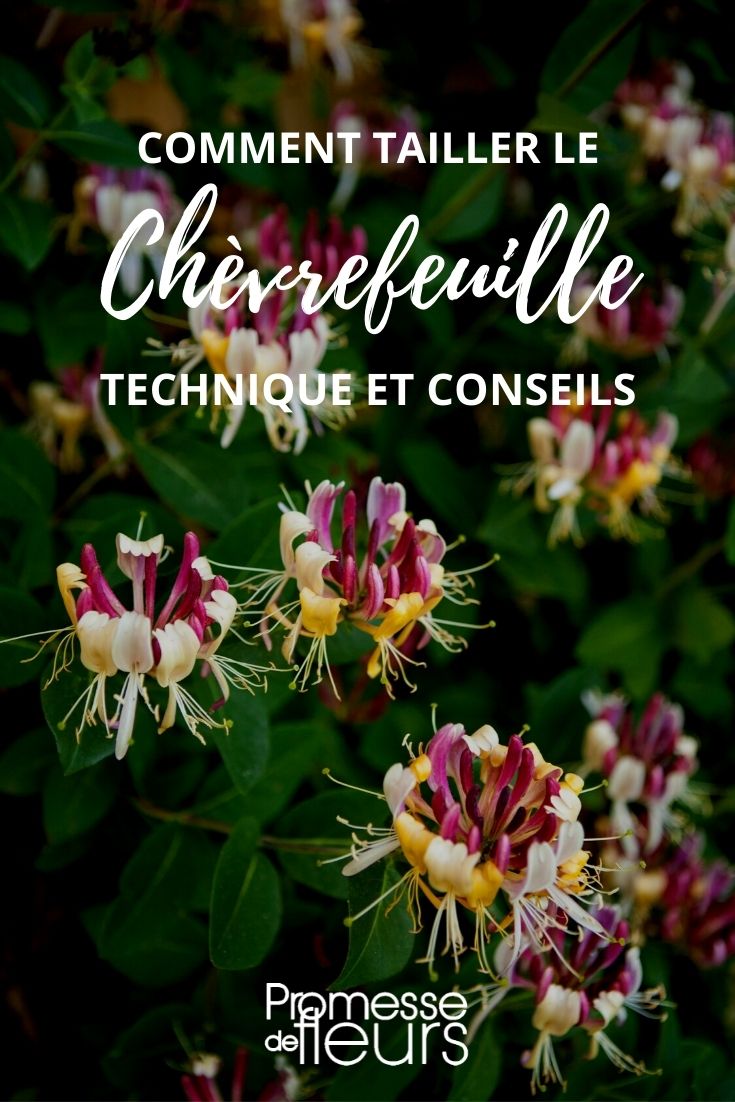
Comments